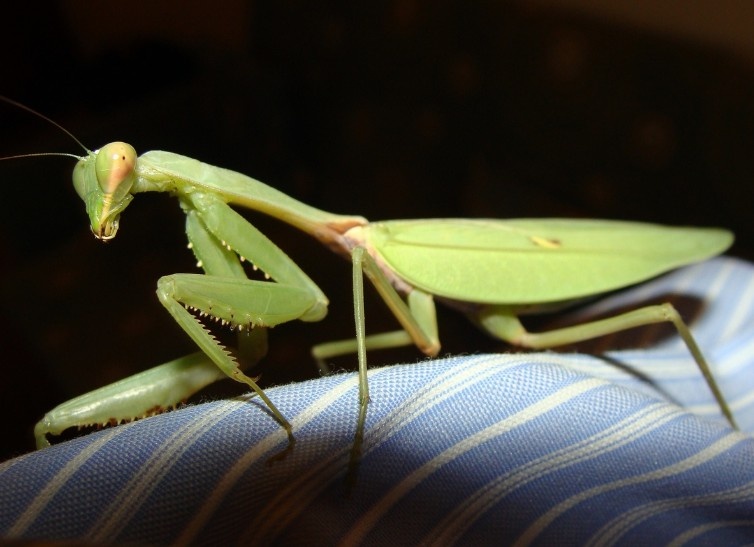Introduction: Welcome to the World of Baby Praying Mantis
Have you ever thought about having a Baby Praying Mantis? You might be surprised to learn that these unique, almost alien-like insects make fantastic pets! With their striking looks and captivating behavior, praying mantises are popular pets. But, their look is somewhat intimidating. These little creatures are easy to care for. So, they are a great low-maintenance pet.
When most people think of pets, they probably imagine cats, dogs, or maybe fish. However, praying mantises offer something different. They are low-effort, yet fascinating pets. If you’re someone who loves animals but doesn’t have the time or space for more traditional pets, a praying mantis could be the perfect companion for you. They don’t require constant attention, and their needs are simple and straightforward.
So, why should you consider a praying mantis as your next pet? These insects are very low-maintenance. So, they are perfect for beginners or anyone wanting a pet that won’t take much time or effort. Unlike other pets, mantises are low-maintenance. They need feeding only once or twice a week. They also need little space and attention. Other pets require complex care and multiple feedings each day.
In addition to being easy to care for, praying mantises are absolutely fascinating creatures. Their movements are smooth and graceful, and their hunting techniques are awe-inspiring. Watching a mantis in action can be mesmerizing. It turns its head almost 180 degrees to survey its surroundings. Or, it waits patiently for prey to come into its view. For those who enjoy watching animals, mantises are a treat. They show some of nature’s most intriguing tactics.
And let’s not forget their striking appearance. Praying mantises come in a variety of species, each with its own unique look. Some are bright green, blending with their environment. Others, like the Orchid Mantis, have beautiful pink and purple hues. Their large, triangular heads and long, slender bodies give them an almost otherworldly vibe. If you’re someone who appreciates nature’s artistry, a mantis is a perfect pet to admire up close.
Despite their alien appearance, mantises are actually very gentle and not at all aggressive toward humans. In fact, they are quite peaceful. They prefer to stay still and observe their surroundings, rather than interact with others. This calm nature makes them an excellent choice for anyone looking for a pet that doesn’t require constant handling or attention.
One of the most appealing aspects of keeping a praying mantis is their minimal care requirements. You don’t need a lot of fancy equipment or special skills to take care of them. All they need is a small, secure enclosure with enough space to move around, a few insects to eat, and a warm environment to thrive in. No need to worry about regular grooming or complicated feeding schedules.
If you’re thinking about getting a pet but don’t have the time, space, or energy for a more traditional animal, a praying mantis could be a perfect fit. They are a great intro to insect pets. They let us enjoy nature’s wonders, without the high maintenance of other pets. They also provide a fun, educational experience for families and students. It’s for anyone wanting to learn about the natural world.
In this blog, we’ll dive into the world of praying mantises, from baby mantises to the awe-inspiring giant varieties. We’ll explore their care needs, behavior, and why they’re such amazing pets to have. By the end, you’ll see why these easy-to-care-for insects make a wonderful and rewarding pet choice for so many people. Whether you’re a first-time pet owner or someone looking for a unique addition to your family, a praying mantis might just be the perfect pet for you!
1: Baby Praying Mantis: A Small but Mighty Pet

Baby praying mantises, also known as nymphs, may be tiny, but don’t let their size fool you—they’re full of personality! These little creatures are one of the easiest insects to care for, making them an excellent choice for beginner pet owners. Despite their small size, baby mantises are curious and active. They make unique pets that are both simple and fascinating.
Care Requirements:
Space: Baby mantises don’t need a lot of space to thrive. A small enclosure, like a plastic container or a glass jar with a secure lid, is all they need. Make sure there are enough spots for them to climb and explore, as mantises love to perch on surfaces. A simple set-up is all it takes, and you’ll be amazed at how content your little mantis will be in its cozy home.
Temperature: These little guys love warmth. Keep them in a warm area, with a temperature range of 70°F to 85°F. A warm environment helps them grow and stay active. Just avoid placing them in direct sunlight to prevent overheating.
Food: Baby mantises are easy to feed. They enjoy munching on small insects like crickets, fruit flies, and aphids. You can easily find these insects at your local pet store or even catch them outside. Feeding is as simple as placing the insects in the enclosure and watching your mantis hunt them down.
One of the best things about baby mantises is how low-maintenance they are. They don’t require much attention and are easy to care for, which makes them perfect for first-time insect pet owners. Their food is easy to get, and their habitat is simple to set up—no complicated routines required! Just provide them with a small home, a warm environment, and a few insects to snack on, and your baby mantis will be happy.
These tiny creatures may be small in size, but they’re full of charm and wonder. Watching them grow and interact with their environment is an enjoyable experience. Plus, their easy care makes them a stress-free and rewarding pet. So, if you’re looking for a simple, low-maintenance pet that still brings a lot of joy, baby praying mantises are a great choice!
2: The Giant Praying Mantis: A Majestic Pet
If you’re looking for a pet that’s not just easy to care for but also awe-inspiring, the giant praying mantis might be the perfect choice for you. These larger-than-life insects can grow up to 6 inches long, making them an impressive and stunning addition to any pet collection. With their striking features and commanding presence, giant praying mantises are sure to capture the attention of anyone who sees them.
Giant mantises are captivating creatures. Their size alone makes them stand out among other pets, and their behavior and appearance are equally fascinating. These mantises have large, triangular heads with bulging eyes, and their long, slender bodies are built for predation. Their front legs are particularly striking, as they’re adapted for grasping and holding prey. Watching them stalk, catch, and devour their food is truly a spectacle in itself. Their ability to move so quickly and gracefully, despite their size, is a reminder of how skilled and precise these creatures are.
But despite their larger size, giant praying mantises are actually quite peaceful creatures. They’re not aggressive by nature, and they typically spend most of their time resting or hunting. However, it’s important to note that they can be territorial, especially when housed with other mantises. For this reason, it’s usually best to keep just one mantis per enclosure to avoid conflicts.
Care Requirements:
Space: Larger mantises need more room to thrive. A taller enclosure is essential, as they love to climb and perch. They are tree-dwelling creatures in the wild, and they enjoy having vertical space to move around. A tank or enclosure that’s at least 12 inches high will allow your giant mantis to feel comfortable and at ease. It’s also important to include things like twigs, branches, or other structures for them to climb on, as these insects are natural climbers.
Temperature: Like all mantises, giant praying mantises need a warm environment to thrive. Aim to keep the temperature between 70°F to 85°F (21°C to 29°C). A warm space helps them stay active and aids in their molting process. Just be careful not to place them in direct sunlight, as too much heat can be harmful. A consistent warm temperature will make them feel right at home.
Food: While giant mantises eat many of the same foods as their smaller cousins, they do require slightly larger prey to satisfy their hunger. Crickets, moths, and even small grasshoppers are perfect for them. Depending on the size of your mantis, you may also need to feed them larger insects. These mantises are skilled hunters, and they’ll enjoy stalking and ambushing their prey. Simply provide them with a few insects each week, and they’ll do the rest.
Temperament: As mentioned, giant mantises are usually peaceful. But, they can become territorial if housed with other mantises. Some species show aggression to their own kind, especially during molting or mating seasons. Because of this, it’s best to keep one mantis per enclosure. This not only reduces the risk of stress and injury but also ensures that your mantis has the space and resources it needs to thrive.
Giant praying mantises are larger, but easy to care for. They are a great choice for pet owners who want an impressive, low-maintenance pet. Their beauty and low care needs make them a top choice for those wanting a stunning, low-maintenance pet. Whether you’re a beginner or an experienced pet owner, giant mantises can be a fascinating and rewarding pet to care for.
Why Choose a Giant Praying Mantis?
Giant praying mantises are not only visually stunning but also incredibly easy to care for. They require minimal space and only a few simple elements to thrive. Their hunting behavior, peaceful temperament, and beauty make them a top pet insect. If you want a pet that’s as impressive as it is low-maintenance, the giant praying mantis is a fantastic choice.
By choosing a giant mantis, you’ll not only have a beautiful pet but also a living testament to the wonders of nature. These insects are captivating to watch. They are easy to care for. So, they are the perfect pet for someone wanting a unique, awe-inspiring pet without the commitment of other animals. If you’re ready to welcome a giant mantis, you’ll find they are more than a pet. They’re a remarkable creature that brings a bit of nature’s magic into your home.
3: Beautiful Praying Mantis: Nature’s Masterpiece
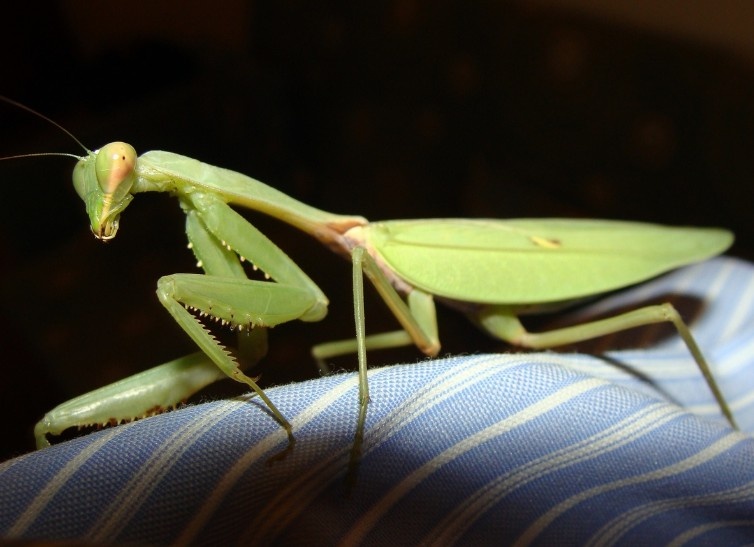
Praying mantises are truly a marvel of nature, and some species, like the Orchid Mantis, are nature’s true works of art. Their intricate patterns, stunning colors, and graceful movements make mantises a joy to watch. They are also a beautiful addition to any pet collection. They come in all shapes, sizes, and colors, and some species have striking hues that seem almost too vibrant to be real. The Orchid Mantis, for instance, is known for its delicate pink, white, and purple tones, which make it look almost like a flower in bloom. These mantises are nature’s own masterpieces, captivating anyone lucky enough to see them.
What makes these mantises more fascinating is their beauty. It lies not just in their appearance, but also in how they blend into their surroundings. Many species have evolved to look like flowers or leaves, helping them blend into their environments and avoid predators. This camouflage, combined with their intricate colors and designs, makes them a true wonder to behold. Whether perched on a plant or flying, beautiful praying mantises are unforgettable.
Care Requirements:
Space: Like all mantises, beautiful species like the Orchid Mantis need a safe place to climb and explore. These insects love to move around and perch on various surfaces. While they don’t require a lot of space, they do appreciate having a natural environment that reflects their beauty. A simple enclosure with plenty of room for climbing and resting is ideal. Adding twigs, branches, and small plants will create a more natural and comfortable space for them to thrive. A lush habitat mimics their natural environment. It makes them feel at ease and encourages their natural behaviors.
Food: Beautiful mantises eat like other mantis species. They eat crickets, small insects, and, occasionally, fruit flies. But, when caring for these stunning creatures, it’s important to remember that their environment should be just as beautiful as they are. Adding decorative plants and greenery in their habitat does two things. It makes it more attractive. It also mimics their natural surroundings. The beauty of the mantis will be enhanced by the vibrant environment, creating a perfect balance of nature within your home. Be sure to provide fresh food regularly to keep your mantis healthy and happy, but don’t forget to keep their space as lush and beautiful as they are.
Despite their striking appearance, beautiful praying mantises are just as easy to care for as any other species. With a little extra attention to their habitat—such as adding decorative plants or foliage—these mantises will thrive just as well as any other. Their care needs are simple and clear. So, they are perfect for beginners who want a stunning, low-maintenance pet. Whether you’re a seasoned mantis keeper or a first-time pet owner, these beautiful creatures are sure to capture your heart and leave you in awe.
Why Choose a Beautiful Praying Mantis?
Not only are beautiful praying mantises a treat to look at, but they’re also incredibly easy to care for. Their habitat needs plants and twigs to mimic their natural environment. It’s easy to provide a diet of small insects. If you want a pet that is both beautiful and low-maintenance, a praying mantis could be perfect. You’ll enjoy watching these creatures thrive in a lush, natural habitat. Their graceful, flower-like appearance will amaze you.
4: Praying Mantis Care Tips: Easy for Beginners
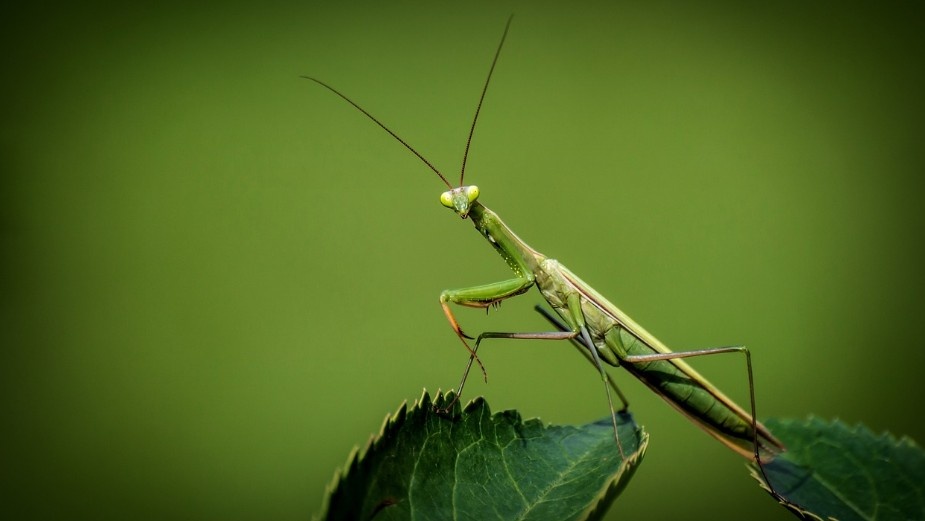
Caring for a praying mantis is very simple. So, they are a great pet for beginners or those wanting a low-maintenance pet. Unlike traditional pets like dogs or cats, mantises don’t require a lot of space or constant attention. With just a few basic care tips, your mantis will thrive and provide you with hours of fascinating observation. Let’s dive into some essential care guidelines that will make maintaining a mantis as a pet both easy and rewarding.
1. Minimal Space Requirements
One of the best aspects of keeping a praying mantis as a pet is that they don’t need a lot of space. In fact, a small enclosure is all they need to feel safe and comfortable. Unlike larger pets, which require spacious cages or large tanks, mantises can live in much smaller spaces. A plastic container or a glass jar with a lid is perfect for housing them. These enclosures don’t need to be big; just enough room for the mantis to move around and climb.
Praying mantises love to climb, so it’s a good idea to include some twigs or branches inside their enclosure. These provide them with surfaces to grip and crawl on, making their environment feel more natural. A small enclosure means they won’t need much cleaning either, reducing your workload.
2. Simple Feeding Routines
Feeding a praying mantis is one of the easiest parts of their care. Unlike more demanding pets that require regular meals, mantises only need to be fed a couple of times a week. Their diet typically consists of small insects, such as crickets, fruit flies, or aphids. You can buy these insects at pet stores or even catch them from your garden if you’re interested in sourcing them yourself.
Once or twice a week, you simply offer them a small insect or two. The mantis will hunt and catch its food on its own, which makes them an interesting pet to observe. You don’t need to spend much time preparing food for your mantis, which makes them a low-maintenance pet for busy individuals.
In addition to feeding them insects, remove any leftover food from the enclosure. Decaying insects can create an unsanitary environment. But overall, the feeding routine for a praying mantis is very straightforward and easy to keep up with.
3. Occasional Misting for Hydration
Although mantises don’t drink water in the traditional sense, they do need some humidity in their environment to stay hydrated. To achieve this, you’ll want to lightly mist their enclosure once a week. This will provide them with the necessary moisture they need to stay healthy. Be sure to use a fine mist sprayer, so you don’t flood their environment with water.
Over-misting can lead to problems such as mold or mildew, so be sure to keep it light. A quick spray will add just enough humidity to keep your mantis comfortable. If you live in a particularly dry area, you may need to mist more often, but once a week is generally sufficient for most climates.
4. Temperature Control
Praying mantises thrive in warmer temperatures. Ideally, you should keep their environment between 70°F and 85°F (21°C to 29°C). You don’t need to worry about a heat lamp or elaborate heating systems, as long as you keep them in a warm spot in your home. A temperature-controlled room or a sunny window should provide adequate warmth.
Be sure to avoid extreme temperatures, as they can stress the mantis or even lead to health problems. If you live in a cooler climate, a small space heater or a heat pad can help maintain the ideal temperature for your mantis. However, for most people, room temperature will be just fine.
5. Minimal Maintenance and Cleaning
Another reason why mantises are great pets is their low maintenance in terms of cleaning. You don’t have to worry about cleaning up pet waste every day like you would with a dog or cat. Once or twice a month, you should clean the enclosure by gently wiping it down with a damp cloth. Make sure to remove any leftover food, fallen debris, or dead insects to prevent any unpleasant smells or bacterial growth.
In general, mantises are incredibly clean creatures, and their small enclosures don’t need much attention. As long as you provide them with a safe, clean environment and regular food and water, they’ll do just fine.
6. Why Praying Mantises Are So Easy to Care For
When compared to other low-maintenance pets, such as hamsters, reptiles, or fish, mantises are among the easiest pets to care for. They don’t need constant attention, expensive food, or elaborate living spaces. A small enclosure, a couple of insects per week, and a quick misting session once a week is all it takes to keep them happy.
This simplicity makes them a great option for beginners or for people who live in small spaces, such as apartments. They don’t require much room, making them ideal for those who want a pet but don’t have the time or space for something more demanding.
5: Praying Mantis Behavior: What Makes Them So Fascinating?
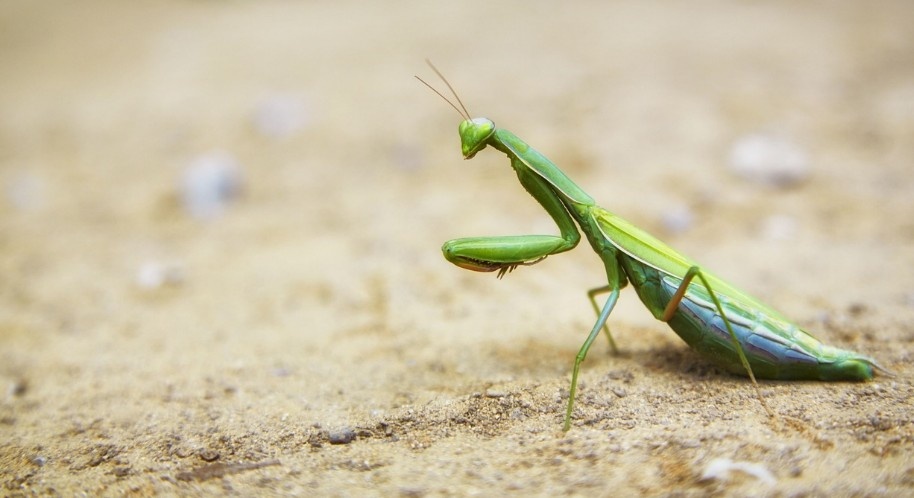
Praying mantises are fascinating. Their behaviors make them fun to watch. Whether you’re a seasoned insect fan or a new pet owner, mantises will captivate you. Their unique ways of hunting, interacting, and moving are amazing. Let’s dive into some fascinating aspects of praying mantis behavior. This includes their hunting skills and unusual mating rituals.
This 180-degree head turn is a key factor in their hunting prowess. By being able to observe all angles without moving their bodies, mantises are excellent at detecting movement. They are always aware of their surroundings. It could be a small insect scurrying across the floor or a predator sneaking up behind them.
Their head rotation is also important for their survival, as they rely on quick movements to capture their prey. By staying still and slowly turning their head, they can find the best time to strike. This ensures they don’t miss their target.
2. Praying Mantis Hunting Skills: Predatory Perfection
Praying mantises are some of the best hunters in the insect world. Their hunting behavior is a combination of patience, precision, and ambush tactics. A praying mantis will often sit perfectly still for long periods, waiting for a potential meal to come into striking distance. They use their sharp, spiny forelegs to grab their prey with lightning speed.
Mantises are ambush predators, meaning they don’t actively chase after their food. Instead, they rely on their camouflage to blend into their surroundings, waiting for an unsuspecting insect to wander by. Once their prey is in range, they strike quickly, using their forelegs to snatch the prey and bring it to their mouths.
This ambush technique allows them to catch a variety of prey, including crickets, moths, and even small birds or lizards in some species. Their hunting skills make them fun to watch. They also keep your pet mantis well-fed with little effort from you.
3. Mating Rituals: Fascinating and Sometimes Frightening
Another fascinating aspect of mantis behavior is their mating rituals. Many species of praying mantis engage in sexual cannibalism, a behavior where the female may eat the male after or during mating. While this may sound gruesome, it is a natural part of the mating process for many mantis species.
In some cases, the female may eat the male after mating. In others, it may happen only after he has fertilized her eggs. Researchers believe that this behavior could give the female extra nutrition. It is vital for producing healthy eggs. The male mantis may not survive mating. Some mantis species will mate several times. This gives the male more chances to pass on his genes before he dies.
This unusual aspect of mantis behavior has made them famous, but it is important to note that not all species exhibit sexual cannibalism. Some males may even manage to escape the female’s grasp after mating. This fascinating ritual shows the complexity of mantis behavior. It also shows how it fits into their life cycle.
4. The Art of Camouflage and Patience
Praying mantises are masters of camouflage, often blending seamlessly into their environment. Depending on the species, they can appear like twigs, leaves, or flowers, making them nearly impossible to spot by predators or prey. This camouflage is an important part of their hunting strategy. By blending in, mantises can wait for hours, even days, unnoticed. This conserves energy while they wait for their next meal.
Their patience is unmatched. When hunting, a mantis may remain perfectly still for an extended period, just waiting for the right moment to strike. This patience is essential for their success as predators, as it allows them to conserve energy and increase the chances of a successful catch. It’s incredible to watch a mantis in action. It sits motionless in its enclosure, then suddenly launches to catch a meal with unbelievable speed.
5. Social and Territorial Behavior
While praying mantises are solitary creatures, they can display territorial behavior, especially when kept in close proximity to other mantises. If you house multiple mantises in the same enclosure, they may fight over space or food. The larger mantis will often dominate the smaller ones, and fights can sometimes result in injury or even death.
This territorial nature makes it important to house mantises separately to prevent conflicts. However, their solitary behavior is one of the reasons why they are easy to care for as pets. Unlike social animals that require interaction with others, a praying mantis is content on its own and does not need companionship to thrive.
6. Fascinating Movement and Hunting Tactics
Praying mantises are known for their unique, “praying” stance, where they fold their forearms in front of their body as though in prayer. This posture not only looks intriguing but also serves a functional purpose. When they aren’t hunting, mantises often adopt this pose, keeping their arms poised and ready for action.
When it comes to striking, their movements are incredibly fast and precise. Mantises can snap their forearms shut with such force that they can capture prey much larger than themselves. Their speed is one of the reasons they are such effective predators.
Additionally, mantises are capable of jumping short distances, further helping them capture prey or avoid danger. Although their jumps are not as long or as high as those of other insects, they are another tool in their hunting and survival arsenal.
6: The Easiest Pets to Care For: A Comparison with Praying Mantises
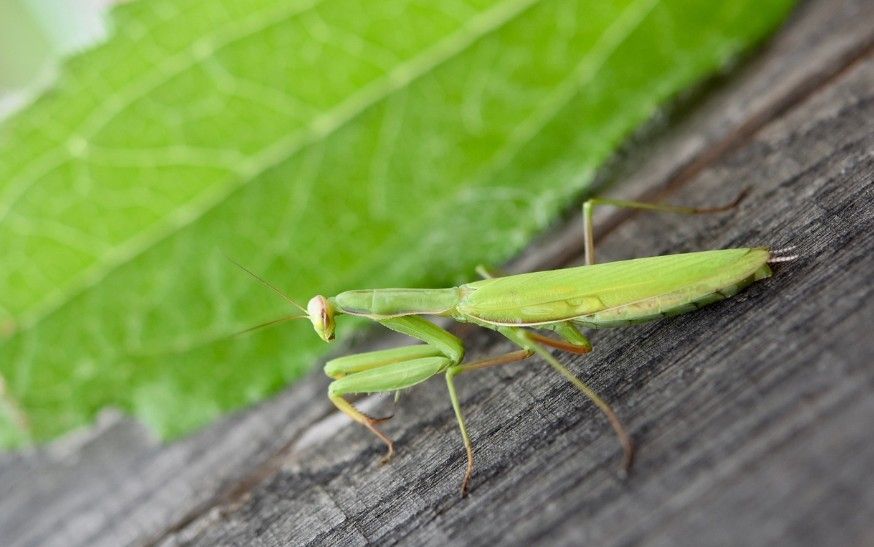
When it comes to low-maintenance pets, praying mantises are often at the top of the list. These fascinating creatures are easy to care for, requiring minimal space and attention. But how do they compare to other low-maintenance pets? Let’s look at some common pet choices and see how they stack up against praying mantises in terms of care needs.
1. Hamsters: A Little More Work Than Mantises
Hamsters are a popular pet choice for those seeking low-maintenance animals. They don’t require a lot of daily care, and their diet mostly consists of seeds, grains, and vegetables. However, hamsters do require a bit more space than mantises. You’ll need to provide them with a cage that is spacious enough for them to move around and exercise, as well as bedding for burrowing.
In addition to the space requirements, hamsters also need time out of their cage for exercise. Hamster wheels or playtime in a safe area outside of their cage are essential for keeping them active and healthy. While hamsters are social animals and may enjoy some interaction, mantises, on the other hand, do not need any social interaction and are completely content on their own.
Hamsters can also be more sensitive to changes in their environment. If their cage is too dirty, they may become stressed or ill, requiring more regular cleaning. While they are relatively low-maintenance, hamsters still need daily care, including feeding and regular cage cleaning. On the other hand, mantises need far less attention and are often content with minimal care. They only require feeding once or twice a week and a clean environment, making them an easier choice for those who want a pet without the extra work.
2. Betta Fish: Less Maintenance Than Hamsters, But More Than Mantises
Betta fish are another popular low-maintenance pet. They are relatively easy to care for and don’t require a large tank. However, bettas still need regular water changes and proper tank maintenance. Keeping the water clean and properly filtered is crucial to their health. Bettas also need a tank with a lid to prevent them from jumping out, as well as temperature control to keep the water within a comfortable range for them to thrive.
While betta fish don’t require daily feeding, they do need their tank cleaned frequently, which can be a hassle. Water changes should be done at least once a week, and the tank should be cleaned to remove any waste or debris. Betta fish also need a balanced diet and specific water conditions, which can require more time and effort than mantis care.
In comparison, mantises are even lower maintenance. They don’t require a tank or complex filtration systems. Instead, they can be housed in a small enclosure with minimal setup. While you will need to occasionally mist their environment to maintain humidity, mantises don’t require the constant monitoring of water quality or temperature that betta fish do. Their feeding needs are also simpler, as they mainly eat small insects, which are easier to source than the specialized food that bettas require.
3. Reptiles: High Maintenance Compared to Mantises
Reptiles, such as turtles, lizards, or snakes, are another type of low-maintenance pet, but they come with a lot more responsibilities than praying mantises. Most reptiles require a carefully controlled environment to thrive. For example, turtles often need special UV lighting, temperature regulation, and humidity control to stay healthy. Lizards also require specific temperature gradients in their enclosure, which means using heat lamps, UVB lighting, and thermometers to monitor the environment.
Additionally, reptiles often have specific dietary needs that can be more complicated to meet than the simple diet of a praying mantis. Depending on the species, reptiles may need a variety of live insects, vegetables, or specialized pellets to ensure they get the nutrients they need. While mantises primarily eat crickets or fruit flies, reptiles often need a more diverse and regularly prepared diet.
Cleaning a reptile’s enclosure can also be more time-consuming. Reptiles tend to produce a larger amount of waste, which requires regular cleaning to keep the enclosure sanitary. You also need to be mindful of their specific habitat needs, such as hiding spots and the right type of substrate for their enclosure.
Compared to reptiles, mantises are much simpler to care for. They don’t need complex lighting setups or special food. Their enclosures are small and require minimal upkeep. Feeding them is easy, and their food source (insects) is readily available. Their environmental needs are basic, requiring only a temperature range and occasional misting, which makes them incredibly low-maintenance compared to reptiles.
4. Why Praying Mantises Are the Easiest Pets to Care For
Praying mantises are often considered the easiest pets to care for, especially when compared to other low-maintenance animals. Here are a few reasons why:
Minimal Space: Mantises don’t need large enclosures. A simple plastic container or glass jar is enough to house them, saving space and making them easy to accommodate in any home.
Low Feeding Requirements: Unlike many pets that need to be fed daily or require special diets, mantises only need to be fed once or twice a week. Their diet consists of small insects, which are easy to source and don’t require complex meal preparation.
No Special Lighting or Temperature Control: Unlike reptiles or betta fish, mantises don’t require special lighting setups, filters, or temperature controls. As long as their environment is warm (around 70°F to 85°F), they’ll thrive without needing complex equipment.
Simple Hydration: Mantis hydration is simple and can be maintained with occasional misting. This takes just a few minutes a week, unlike the constant water changes required for fish or reptiles.
Overall, mantises are the ideal pet for anyone who wants an interesting, low-maintenance animal that requires minimal space, time, and effort.
7: Fun and Unusual Facts about Praying Mantises
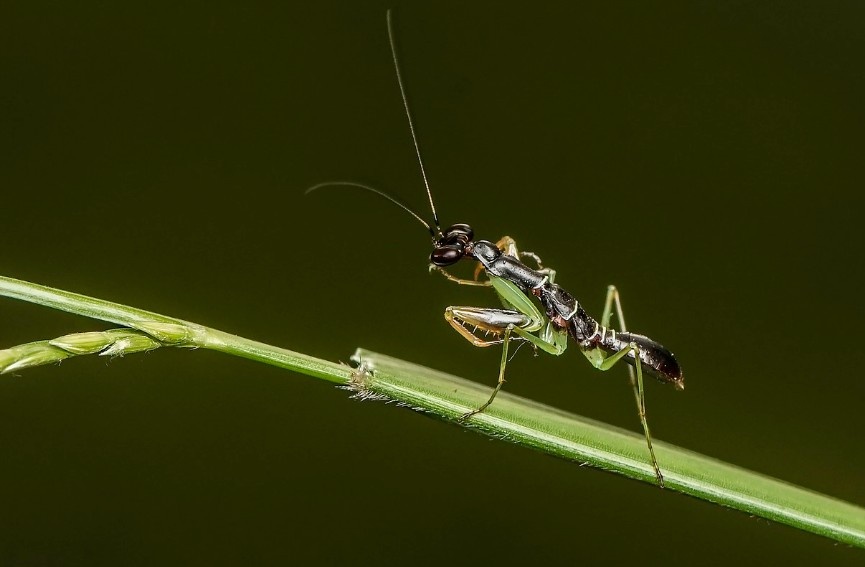
Praying mantises are already fascinating creatures with their unique appearance and behavior, but did you know that there are some truly unusual and fun facts about them that make them even more interesting as pets? Here are a few quirky facts that will make you appreciate these insects even more:
1. Camouflage Masters: Nature’s Stealth Experts
Praying mantises are masters of disguise. Depending on the species, mantises can blend in perfectly with their surroundings. Some species look like twigs or leaves, while others resemble flowers or branches. This camouflage helps mantises avoid predators and also aids in hunting prey. By staying perfectly still and blending into their environment, mantises can wait for hours, even days, for their next meal.
Their camouflage is so effective that it’s hard to spot them even if you’re looking directly at them. This trait is not only fascinating to observe but is also an important survival skill for mantises, as it helps them avoid danger and ambush their prey.
2. Sexual Cannibalism: A Strange, Yet Fascinating Behavior
One of the most well-known and bizarre aspects of mantis behavior is sexual cannibalism. In some species, after mating, the female may eat the male. This behavior has long intrigued scientists and animal lovers alike. While it may sound gruesome, this practice is believed to provide the female with extra nutrition, which helps her produce healthy eggs.
Interestingly, not all mantis species exhibit this behavior, and in some species, the male may even escape after mating. However, in those that do engage in sexual cannibalism, the male’s sacrifice is often seen as a natural part of the reproductive process. This strange and fascinating behavior adds another layer of intrigue to the mantis’s already mysterious persona.
3. Incredible Agility: Striking with Lightning Speed
Praying mantises are not only great at hiding, but they are also incredibly fast when it comes to hunting. Their strikes are lightning-fast, and they can snatch prey out of the air with remarkable precision. A mantis can move so quickly that it can capture prey several times its size in the blink of an eye. This incredible agility makes them one of nature’s most effective hunters.
Not only do mantises use their speed to catch food, but they also use it to avoid danger. If threatened, a mantis can jump short distances or quickly retreat to a safer position, showcasing their agility and reflexes.
4. They Have “Hands”
Praying mantises have specialized forelegs that are adapted for hunting. These legs are covered in sharp spines, which help them grip and hold onto their prey. When they catch an insect, they quickly bring it to their mouths and begin feeding. The mantis’s spiny forelegs are a fascinating feature. They give it a distinctive, “praying” appearance.
Final Thought
Praying mantises make great pets. They have unusual behaviors, incredible agility, and a unique appearance. They suit anyone who loves fascinating creatures. From their camouflage to their fast hunting, there’s always more to learn about these fascinating insects. Their low care needs make them ideal for first-time pet owners. They suit anyone wanting a pet that requires little attention but is still fascinating. Whether you’re a seasoned insect fan or new to mantises, these creatures will give you a unique pet experience.

